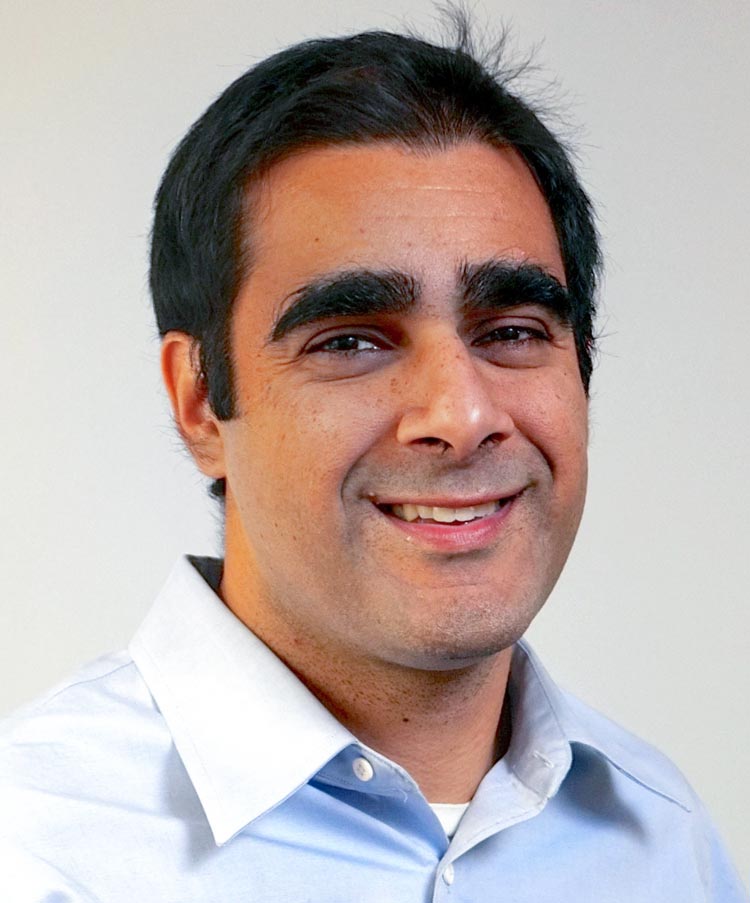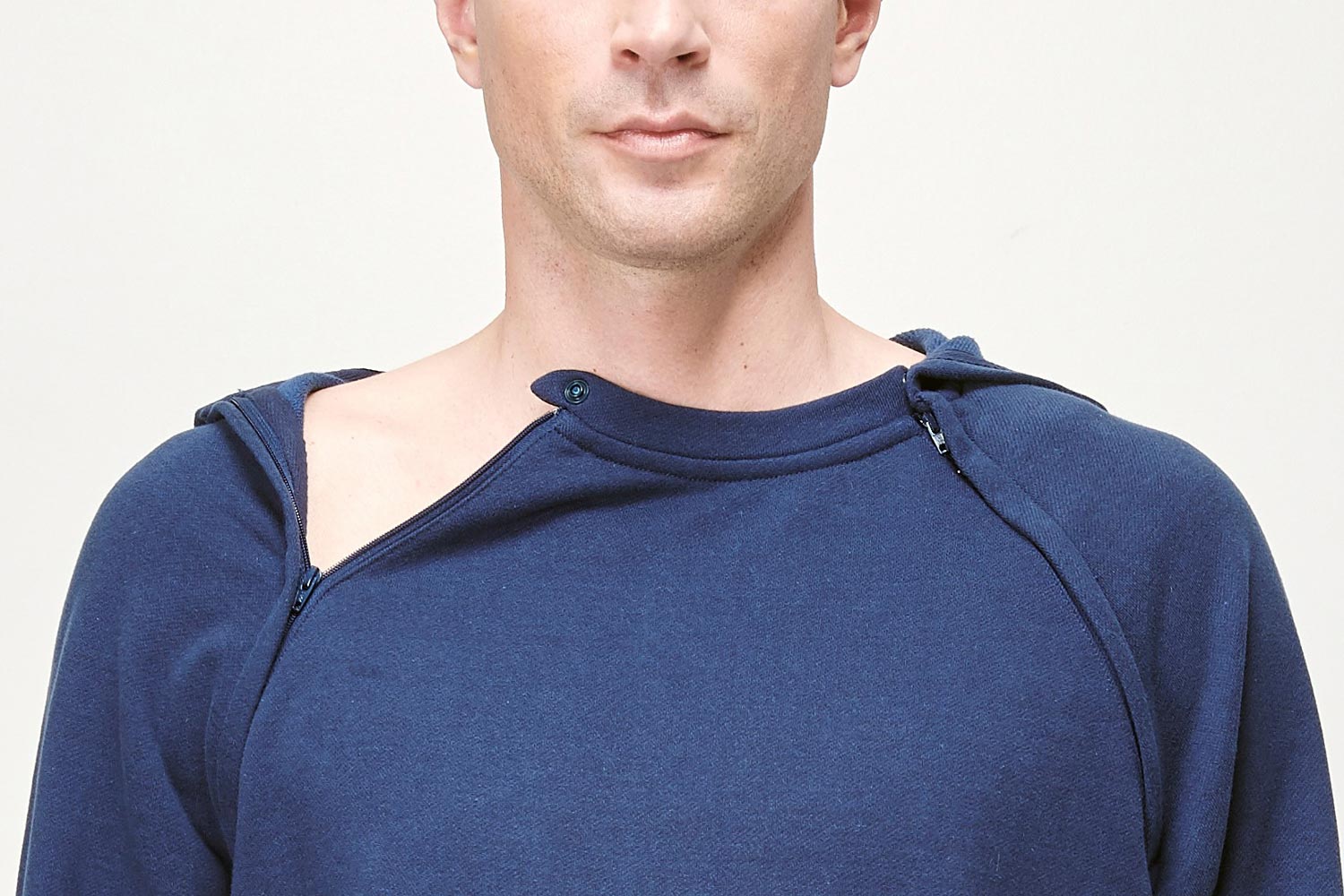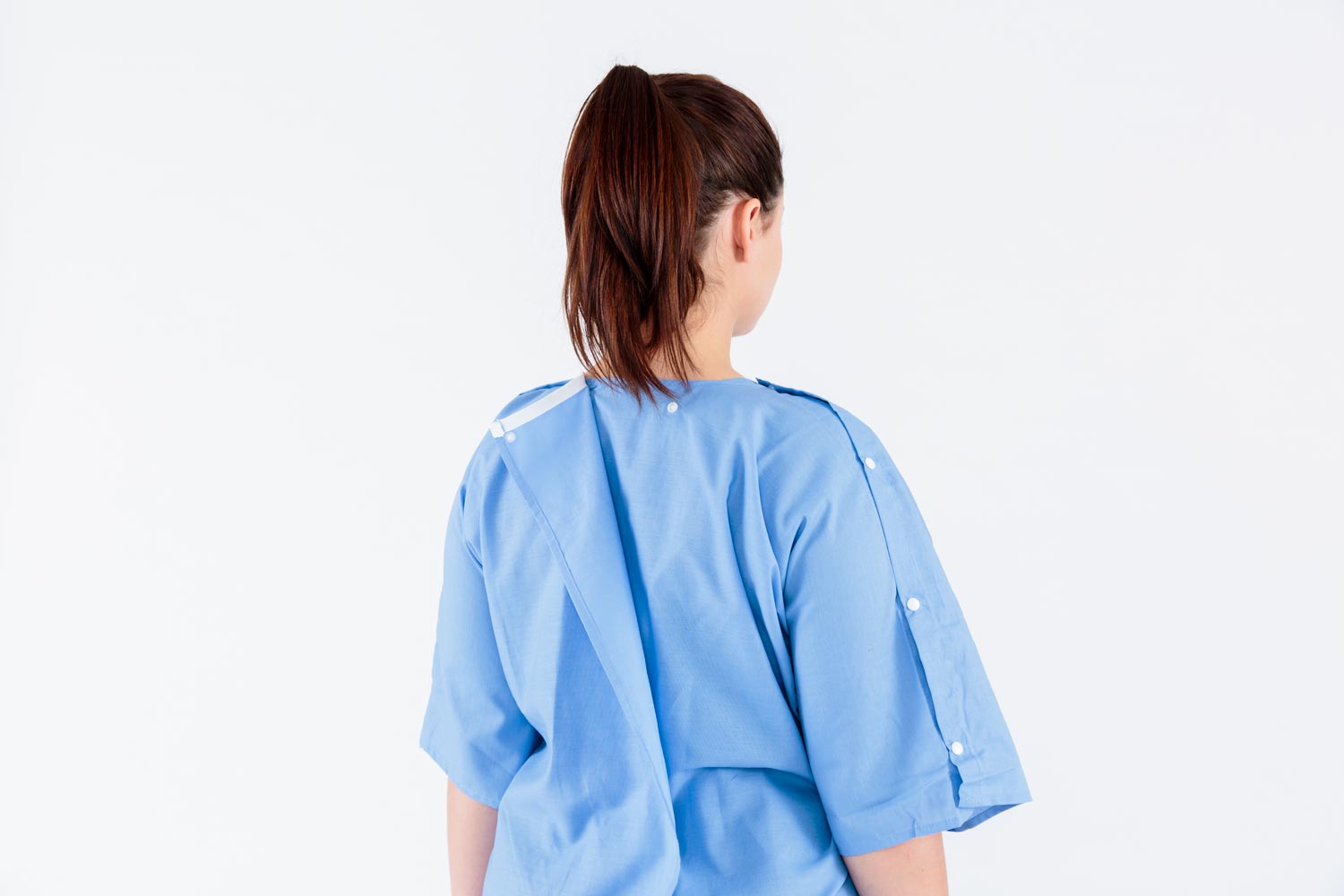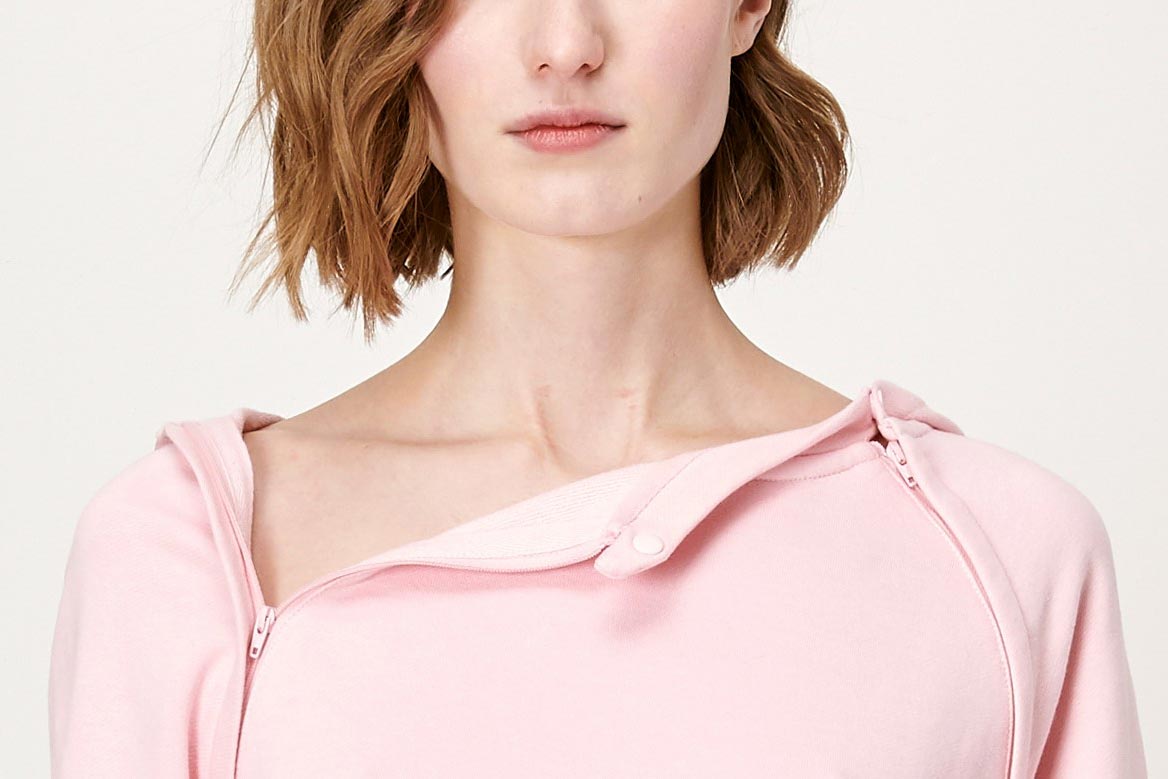University of Virginia alumnus Chaitenya Razdan made headlines in January when his company revealed a less embarrassing version of the universally despised hospital gown.
Now, Razdan’s startup, Care+Wear, has announced a collaboration with famed design house Oscar de la Renta. Together, they just released a specially designed hoodie for patients receiving chemotherapy, blood transfusions and other IV treatments.
Oscar de la Renta will donate 500 hoodies to the Sylvester Comprehensive Cancer Center in Miami, and a percentage of the hoodies’ sales will go to helping cancer patients on an ongoing basis on behalf of Care+Wear and Oscar de la Renta.

Chaitenya Razdan started Care+Wear after a career in investment banking. (Photo courtesy of Chaitenya Razdan)
Razdan, a 2005 McIntire School of Commerce graduate and former investment banker, started Care+Wear in 2014 after watching several close friends and family members go through chemotherapy with tube socks on their arms because they could not find other clothing that would both protect and allow access to the lines inserted in their arm for transfusions.
Since then, the company has launched soft, breathable anti-microbial covers that accommodate infusion lines, plus specially designed blouses and polos for chest ports, a more modest and comfortable hospital gown, and now, an Oscar de la Renta hoodie.
We caught up with Razdan on Thursday to learn more about his most recent collaboration.
Q. How did you start working with Oscar de la Renta?
A. We had the opportunity to meet with Oscar de la Renta CEO Alex Bolen after connecting with him after a panel discussion. He is also the late Oscar de la Renta’s son-in-law; his wife, Eliza, heads up licensing for the company. We explained our mission, and he told us that Oscar, who died of cancer in 2014, had received treatment via port-a-cath and always hated going in for infusions. I thought it was really humbling to hear that here was someone who was truly the epitome of fashion, and even he had to disrobe for treatment – there had to be a solution. They really connected personally to our mission and wanted to work with us as a way to honor Oscar.
For us, it was a really exciting opportunity to work with one of the world’s leading fashion brands and create a design that is both fashionable and functional, and that we hope will really enhance the lives of patients facing tough cancer treatments.
Q. Tell me about the hoodie. What problems does it solve for patients?
A. When patients go in for chemotherapy or other IV treatments, they have a port or a central line that nurses and doctors need to access. Historically, that means patients have to disrobe, perhaps only wearing a hospital gown for the six to eight hours they are getting treatment. The zippers on either side of the hoodie allow direct access to the port without forcing patients to disrobe.

The hoodie was designed with clinical function in mind, with carefully placed zippers that allow caregivers to access ports without forcing the patient to undress. (Photo courtesy of Care+Wear)
We also chose a really comfortable, warm French terry fabric, because patients have told us that infusion centers are often very cold. We designed the hoodie to keep patients warm and to provide a little comfort during treatment.
Q. Can we expect more runway-worthy collaborations in the future?
A. We have a few collaborations in the works, including one with Lucy Jones, an up-and-coming designer who was named Parsons’ Womenswear Designer of the Year in 2015. She focuses on “seated design” – designs for people who spend a lot of time seated, perhaps in wheelchairs.
In general, we are always excited to partner with people who have a desire to improve the patient experience, and who are willing to work with us in our comprehensive design process, which includes a lot of feedback from patients and clinicians.
Q. Are more designers getting into health care clothing?
A. I don’t know if this is true across the entire industry, but we have definitely seen a lot of people interested in collaborating with us. Everyone has loved ones who have been in the hospital, and people want to be helpful and make a difference.
I also think the trend toward “athleisure” clothing is spurring more interest. People are interested in wearing more comfortable clothing, and I think that will lead to more designers realizing that no one has really broken into health care yet, and that there are a lot of opportunities for better design.
Q. It’s been about four months since you launched the much-heralded hospital gown redesign. How is it going?
A. It’s been great. We were fortunate to get a lot of great publicity when the gowns first debuted. We have piloted them in several hospitals since then and gotten some amazing feedback.

Care+Wear’s partnered with the Parsons School of Design to design a more modest, comfortable and functional hospital gown. (Photo courtesy of Care+Wear)
As part of our iterative design process, we used that feedback to create an updated version of the gown a few weeks ago. The biggest change is using metal snaps instead of plastic snaps. Hospitals told us that metal snaps work better with their laundry process, which is a very important aspect of the gown’s use.
Q. Any other products in the works that you can tell us about?
A. I mentioned the collaboration with Lucy Jones – we are actually working on gloves for people with mobility challenges, particularly those who frequently use wheelchairs, crutches or walkers. We are looking forward to launching those soon.
In general, I always say that this is only the beginning, because there is such a profound need for change in health care and I think we can find design ideas wherever we look. We are excited to be a part of that – it really is a privilege and an honor to help improve patients’ lives.
Media Contact
Article Information
April 20, 2018
/content/qa-why-alum-wants-you-wear-oscar-de-la-renta-hospital

